#released in the summer of 1999 one year after the end of the Second Wizarding War
Text
10 Game Changer Films
Over the past century, there have been many movies that were marked with quality acting and quality story telling. Some movies are genre defining and remain memorable long after the movie is released. Some movies are perfect little 2 hour pieces of art. And beyond that, there are movies that transcend genre and change the way that movies are produced and viewed. Here is a list of ten movies the changed Hollywood cinema. There is no way to rank them in order of importance because they all shaped the way movies were made and presented at the time, so 10 are listed in order of date. Feel free to add suggestions for game changer movies in the comments. This is a list of American films and doesn’t come close to all game changers, but these 10 stick out in my head whenever I am asked for examples:
------------------------------------------------------------------
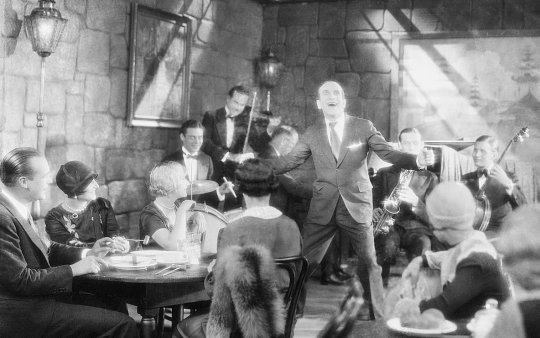
The Jazz Singer (1927):
The movie that marked the end of the silent era, this was the first feature-length motion picture with synchronized recorded music and lip-synchronous singing and speech. It is has six songs performed by Al Jolson. It is the story of a Jewish boy who wants to become a singer despite the traditions of his devout family. The boy is caught singing and decides to run away from home, change his name, and become a famous jazz singer. He tries to disguise himself while performing at one point and makes the unfortunate choice of putting on black face. It is kind of hard to watch, but the advent of the “talkie” changed the way audiences enjoyed movies from that point on.
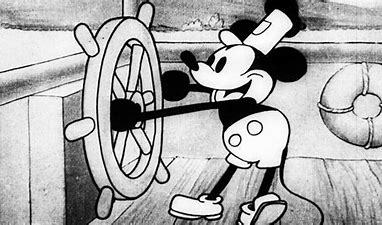
Steamboat Willie (1928):
This was the first Disney cartoon with synchronized sound with a fully post-produced soundtrack. It is also considered to be the debut of Mickey Mouse. The layered drawings have a realistic feel and are impressive today despite being almost 100 years old. Also, nothing beats that iconic opening sound of the film in which you can hear the film reel behind the sound of the lead character whistling. Animation became a genre at that moment and has done nothing but grow and improve, but this seems like the seed that started it all.
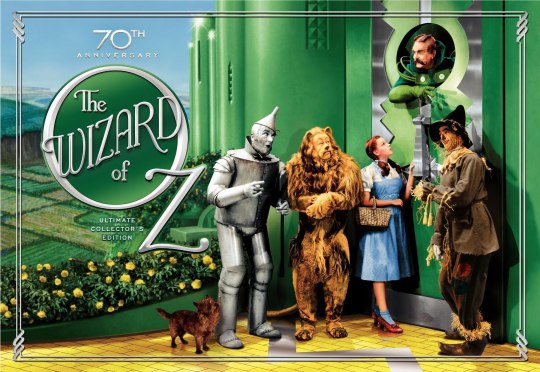
The Wizard of Oz (1939):
Generally considered to be one of the greatest films of all time, this juggernaut of a film was not considered best Best Picture nor was it even a financial success on first release. It was re-released and played on TV in 1956 and is now considered the most seen film in movie history. What really makes the film a game changer is the moment when Dorothy lands in Oz and she steps out her sepia/black & white home and walks into a world of Technicolor. Although many great black and white films where made after this film, it was a symbolic change for audience preference for color films. Kansas was so grey and bleak and the world of Oz was so bright and beautiful...it really is an unparalleled moment in film.
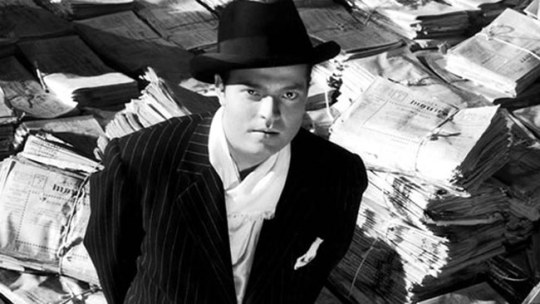
Citizen Kane (1941):
Considered by many to be the perfect film and the best Hollywood film of all time, this film is on the top of many “Best” lists. Director and lead actor Orson Welles used “deep focus” to make all aspects of the picture pop out at the audience. He was having difficulty creating some of the film angles to create this effect, so he would lay on the floor and even break into the stage to create the perfect shot. He also took the camera up to the stage light walkways to create others. The entire narrative was told in flashback from a group of unreliable narrators and the main character dies within the first 2 minutes of the film. The use of lighting and storytelling is an amalgamation of different techniques from around the world of film at the time, including some aspects made up on the spot. Watching the film now, it seems apparent that the bar for movies was raised 90 seconds into the film when the main character says “Rosebud.”
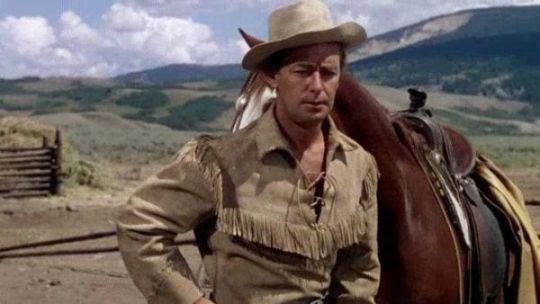
Shane (1953):
This film is not really known for being the very best acted, but it came out right when a bunch of audio and video technology improved simultaneously. The film was shot in standard ratio, but, due to the beautiful shots along the American Plains, was selected by Paramount to debut widescreen format. To get out the word, the film was played at Radio City Music Hall on a specially fitted 30ftx50ft screen. Not to let the visuals overshadow the sound, a new stereophonic soundtrack was recorded and played on an interlocking 35mm magnetic reel in the projection both. The sight of the sweeping landscapes and the echoing ring of gunshots was unlike anything that audiences had ever experienced while setting the standard for movies for years to come.
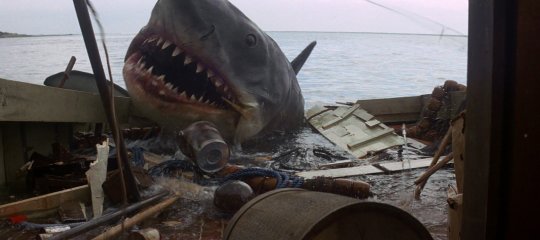
Jaws (1975):
From the opening scene with a young girl being attacked while skinny dipping in the ocean, the film caused legitimate panic amongst film goers. It also created the summer blockbuster which continues to affect how movies are released 45 years later. Spielberg became a household name and the use of the dolly zoom to represent a sudden realization became part of movie language. Along with the films simple and iconic score that made up for a constantly malfunctioning prop, this revenge story made thousands of wanna-be directors realize that it didn’t take a who lot to make an extremely successful movie. Camera trickery, good sound, and a descent plot could make any budding director into a millionaire.

Star Wars (1977):
Arguably the most successful film of all time, this story of the classic hero’s journey is epic and yet simple. There are few movies I have seen with better pacing because the time always flies by. The characters are relatable despite being robots, aliens, and wizards. The aspect of the movie that really made it was the special effects by Industrial Light and Magic. The famous “trench run” on the death star was something that was like a roller coaster on screen. How easy it was to get sucked in to the film is an influence on directors and movie production to this day.
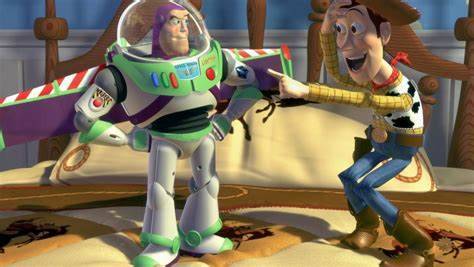
Toy Story (1995):
This was a film that was actually the accumulation of over a decade’s worth of computer graphic technology. It is the first completely CG film and it is excellent. The film score is amazing, the graphics were far better than any audience had seen or ever expected, and it created an entire new way to manufacture a film world. This was also the first film for Pixar, which made far and away the best family films over the last quarter century.
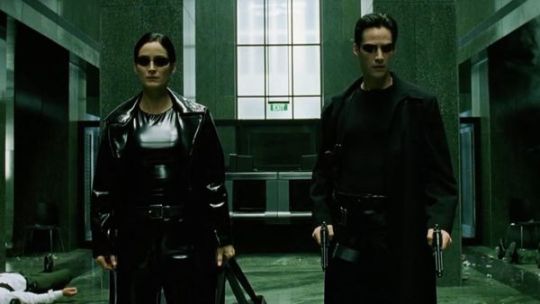
The Matrix (1999):
This film might be somewhat arguable as a game changer, but one aspect of the movie is globally known whether you have seen the movie or not: bullet time. The fight scenes and the wire work for stunts along with the speeding up and slowing down of the film was revolutionary. That moment when Neo dodges the bullets that were shot at him while the camera rotates to show how close the misses were is phenomenal. The action set pieces are frequent with loud pumping music and it influenced audience expectations for how massive a fight scene could be. The judo fight between Neo and Morpheus, the rescue of Morpheus from the agents, the subway fight, and Neo’s enlightenment are all epic fights worthy of an entire film. It was an introduction to cyber punk that kicked in the door for a mass of violent and loud sci-fi films that continue to be cool to this day.
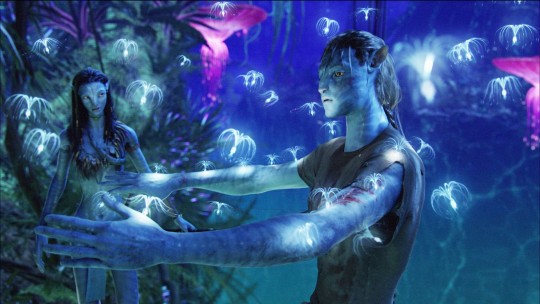
Avatar (2009):
A movie that was 15 years in the making due to a world created completely with computer graphics that interacts seamlessly with human characters, this probably the best looking theater film ever created. The story is not so great, but the world that is created is made specifically to envelop a theater audience. It is a two hour experience like no other and needs to be seen in a full 3D theater with surround sound. It made all other films up their visual game and is the second most lucrative movie in straight dollar amount and the second most lucrative film adjusted for inflation (despite being only 10 years old).
-----------------------------------------------------------------------
This count of 10 is obviously debatable and many films are worthy of a spot on a list like this. This is a list of the 10 that amazed me and made me think that audiences would have changed their expectations of the film experience after seeing the film. If you have movies that have had this effect on you, please list them for others to enjoy.
#Avatar#the matrix#great movies#film history#top 10#star wars#jaws#toy story#shane#the wizard of oz#game changer#introvert#introverts
23 notes
·
View notes
Text
Radio Friendly Unit Shifter: The Complete Nirvana Videography
Heart-Shaped Box
Nirvana had originally wanted Kevin Kerslake to direct this video, who had written the initial treatment in July 1992. By the summer of 1993, he had written at least five treatments, which included a shot of Kurt Cobain kissing William Burroughs and another of the entire band hanging by their necks from trees. Yet by the end of August, the band decided to go with Dutch photographer Anton Corbijn. The director seemed initially apprehensive about agreeing to do the video as he had heard Kurt Cobain could act overly detailed in production. He would say, “But then I looked at it and I thought that actually it was pretty good. I was very amazed by somebody writing a song and having those ideas as precise as he did." The video begins with the band standing in a hospital room around an old man receiving an IV drip, then moves to a surreal Wizard of Oz type of outdoor setting. The same old man in a Santa and later Pope hat climbs on a crow infested cross as they sing the song. The video also includes a young girl reaching for fetuses in a tree, while at the same time an overweight woman appears with human organs painted on her chest with a pair of wings. Many of these ideas were actually conceived by Corbijn, not the band as he always came up with the ideas on his own for any of his videos. Upon the promotion’s release, Kevin Kerslake sued the band for copyright infringement, as the case would be settled out of court. Upon its release, the clip became the most played video on MTV eventually garnering two video music awards for Best Alternative Video and Art Direction. Dave Grohl, Krist Novoselic, and Pat Smear accepted the awards as Kurt Cobain had already passed. New Musical Express named it as the 11th best music video of all time, while Time magazine called it the number 10 music video ever saying it was both “beautiful and terrible.” In 2016, Dave Grohl reunited with the young girl from the video, who had this to say about the reunion. “Today reminded me that I peaked at 6 years old but I was the most badass kid on the playground. Today was the absolute coolest. Or in Dave's words seeing each other today was a 'historic moment'! What a legend!”
Sliver
A music video for the song was released in 1993 to promote the compilation album, Incesticide. The video would be directed by longtime collaborator Kevin Kerslake. The clip begins with Kurt Cobain holding his young daughter up behind some cardboard as she dances along to the first few seconds of the track. The video moves to Cobain’s garage, where it shows the band performing the song. Dave Grohl is playing on the drums, even though he never played on the original song. Cobain only sings into a microphone, but he's never seen playing guitar. He is wearing a red mohair sweater that Courtney Love had purchased for him from a fan at a Nirvana show in Belfast, Northern Ireland. His whole garage is filled with toys and decorations the singer had placed in storage just before the release of Nevermind that he had collected over the years. The collection included a Chim Chim toy monkey that was given to him from the Japanese band Shonen Knife.
Come As You Are
This video would actually be the first one directed by Kevin Kerslake, who was hired after such a negative experience with the director on Smells Like Teen Spirit. The concept would be developed by Kerslake as Cobain could not come up with any ideas, so he let the director develop the video. The singer’s only requirement was that some kind of reference be made to the cover of the Nevermind album. The clip shows the band in a dark room as water falls around them obscuring their form. Other images include Cobain swinging from a chandelier, a dog wandering around the room, a baby swimming in a pool, and a pistol falling underwater. The end of the video shows the entire group lying on the ground as Cobain kisses the camera.
Lithium
This video originally had a concept of doing a short animated story about a female girl named Prego. This girl lives in a forest, when she finds some eggs and takes them to a king in a nearby castle. Unfortunately, both Kevin Kerslake and Cobain discovered that it would take four months to produce the video, so they abandoned the idea. Kerslake instead created a collage of concert footage for the video made up of their 1991 Paramount Theater concert and other footage from the 1992 film, The Year Punk Broke. Biographer Michael Azerrad would make this critical comment about the clip. "Although [the video] was enlivened by Kerslake's neat trick of using more violent footage during the quiet parts of the song and vice versa, it was something of a disappointment from a band and a song that promised so much."
You Know You’re Right
Chris Hafner directed this video released in October 2002 to coincide with the single of the same name. The clip shows a montage of The band in either concerts or interviews, but giving the impression that they are actually performing the song. The video would reach number two on Billboard’s music videos chart. New Musical Express would go on to nominate it for Best Music Video in 2002.
In Bloom
Two versions of this video exist. The first one showed clips of the band walking around New York City and performing at Maxwells in New Jersey. In the clip, one can see Krist Novoselic in some shots has hair and others a shaved head. The reason for that comes from the fact that he had to shave it as punishment for a mediocre performance during a show at the Pyramid Club. They made this alternate version for a compilation dvd on the Sub Pop label, Sub Pop Video Network Volume One. The second version, which most people remember is called the Nevermind version. This promotional clip would be directed once again by Kevin Kerslake and released in November 1992. Kurt Cobain’s original concept for it was to tell the story of a young girl born into a Ku Klux Klan family until she realizes the evil nature of her parents, but the concept seemed much too difficult to work out. He then switched it into a parody of 1960’s television shows like the Ed Sullivan Show. The entire video was shot in original cameras of the period in Kinescope, while the band did the entire song without a script. The actor playing the host was Doug Llewellyn, who had worked as the reporter interviewing people after their case on the People’s Court. Cobain wanted to make a funny parody video to show that there was another side to Nirvana. He felt “so tired for the last year of people taking us so seriously . . . I wanted to fuck off and show them that we have a humorous side to us.” The entire band would wear suits during their performance, while the Nirvana frontman had glasses that eventually made him quite dizzy. He would later say in a Melody Maker interview that they wanted to parody groups like the Dave Clark Five, but not the Beatles. He would never mock the Fab Four due to their influence on his songwriting. In the clip, Novoselic is wearing short hair, which he liked so much that he never changed it. They eventually destroy all of their instruments and the stage by the end of the song. In Bloom would go on to win the 1993 MTV Music Video Award for Best Alternative Video.
Smells Like Teen Spirit
This video would be directed by first timer Sam Bayer. The director believed that he actually got hired because the work on his résumé seemed so below average that Nirvana thought that it would represent the opposite of anything remotely corporate. The concept developed by the band was to stage a school concert that ended in a riot. The idea had been based on the films Rock ‘n’ Roll High School starring the Ramones and The 1979 film, Over the Edge. The clip begins with the band playing the song during a pep rally in a high school gym as cheerleaders wearing sweaters with the anarchy symbol on them cheer along. Every so often, the camera cuts to a janitor dancing alongside his broom. The video ends with the apathetic students going from the bleachers to the gym floor in a full-scale riot. The apathy from the students was actually real as they had been sitting on the bleachers all day. Cobain was finally able to convince Bayer that the students should be allowed to mosh at the end of the video. The singer said, “Once the kids came out dancing they just said 'fuck you', because they were so tired of his shit throughout the day.” The Nirvana frontman hated the directors final edit of the video so much that he went in himself creating what became the final version. Upon its release, Rolling Stone’s David Fricke would say that it was “the greatest gig that you could ever imagine.” The video would go on the win MTV Video Music Awards for Best New Artist and Best Alternative Video. In 1999, the video was named the number three music video of all time on a list put out by MTV. VH1 named it number 18 in the greatest television moments in the history of music as alternative music now became a “commercial and cultural force.” At the end of 2019, the video had been viewed 1 billion times on YouTube.

5 notes
·
View notes
Text
Top 10 Personal Favorite Hit Songs from 1999
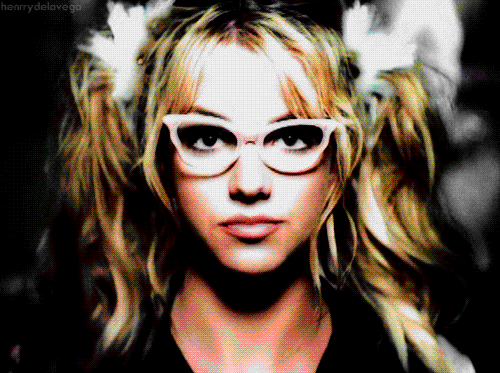
A list with quite possibly the most embarrassing #1 yet, and considering some of the previous ones, that’s really saying something.
Also, a very, very long list of honorable mentions.
Disclaimers:
Keep in mind I’m using both the year-end top 100 lists from the US and from France while making these top 10 things. There’s songs in English that charted in my country way higher than they did in their home countries, or even earlier or later, so that might get surprising at times.
Of course there will be stuff in French. We suck. I know. It’s my list. Deal with it.
My musical tastes have always been terrible and I’m not a critic, just a listener and an idiot.
I have sound to color synesthesia which justifies nothing but might explain why I have trouble describing some songs in other terms than visual ones.
This could have almost been a top fifteen, because holy f█cking shit look at this list of honorable mentions. I might eventually make a top 15 for some years (gosh I just finished my 2013 top and it’s a massacre of good songs, an absolute disaster, and I’m seriously considering making it a top 15 or 20 I swear), but for now, it’s still manageable.
Summer Son (Texas) - Why is this so hot. The lyrics aren’t even hot in the first place. What the hell.
That Don’t Impress Me Much (Shania Twain) - Not my favorite song from her but still very good. Fun fact, one of my English teachers was using songs as dictation exercises and that was the hardest one he ever used for that. I don’t think any of us got the Elvis line right. Also he’s solely responsible for me loving The Cure because the second song he used for this kind of exercise was Boys Don’t Cry. This has nothing to do with Shania Twain but I thought it was a fun little story to tell.
Jusqu’au Bout de la Nuit (Emile et Images) - Two French bands from the eighties team up and release a song which is composed of every single one of their hit songs from the eighties, with each chorus sung one after the other, and... it sounds great? And it charted?? My brother absolutely loved them, too. The only reason it’s not on the list is that it feels like cheating, in a way. I mean, half these songs could top some of my lists on their own. Putting them together is a dirty trick, guys! Oh well, I love you all anyway.
Baby One More Time (Britney Spears) - I really love this song and it was on the list at first, but overplay played a big role in its removal from it.
L’Ame Stram Gram (Mylène Farmer) - Has the privilege of being the first Mylène Farmer music video I ever saw in my life. Was incredibly confused but also fascinated. The song isn’t her best though, and she’s on so many of these lists that I claim self care on its removal from this one, especially because, uh... she’s still gonna appear on it anyway. Damn it.
Move Your Body (Eiffel 65) - I told you I loved stupid dance music didn’t I. Unfortunately things aren’t gonna get better as years pass. I just made a list (which is gonna be posted muuuuuuch later) where I put David Guetta six places higher than Adele. This isn’t a joke.
Save Tonight (Eagle Eye Cherry) - I genuinely love this song and it’s kinda sad I couldn’t fit it on any of the two lists where it was elligible.
La Manivelle (Wazoo) - This would NEVER have charted if La Tribu de Dana by Manau hadn’t been such an enormous hit the previous year. Not in a million years. And if it hadn’t, the world would have been a little less fun. So I’m glad. I love it and it was one of the last cuts from this list.
Kiss Me (Sixpence None the Richer) - Was also on the list at first. Was removed because it never ended on any compilation I made and that’s the only reason.
Well, that was long. Here’s the proper list.
10 - Crazy (Britney Spears)
US: Not on the list?? I was very surprised / FR: #14
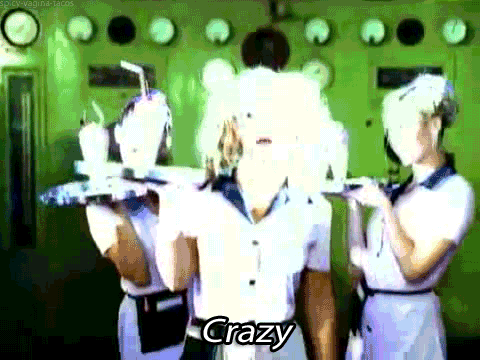
So I dug up the first cd compilations I ever made for the previous list, and look what’s the first song on the third compilation I ever made!

Relistened to it, still love it to bits, put it on the list. Sorry Kiss Me.
9 - All Star (Smash Mouth)
US: #17 / FR: Not on the list

I know it’s impossible to listen to it with fresh ears after something like 15 years of memes. But it’s still damn good and a ton of fun to sing along with it.
8 - Ma Baker 99 (Boney M)
US: Not on the list / FR: #66
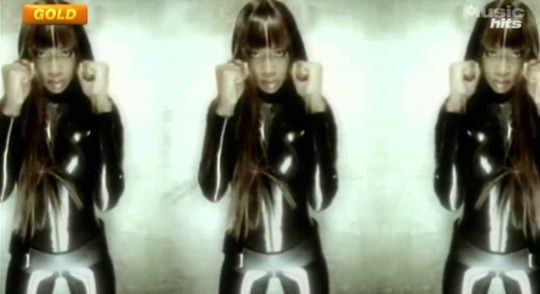
Where’s that photo of the cd compilation I mentioned in the previous list?

There it is.
Yep, it’s a remix, but it charted here, and it sounds and looks absolutely fantastic. I had never heard the original at the time for some reason, and that song sounded so badass. I could only understand isolated bits of the lyrics (like “she was the meanest cat in all Chicago town”, “the cops appeared too soon they couldn’t get away”, “she never could cry”) but it was enough to get a general idea, and that was back when I was starting to realise than most of the dance songs I enjoyed as a kid didn’t tell stories and weren’t about wizards and magic. So, a song about a mean woman who’s also a gangster?? I was like, wow, nice, a song I like with an actual story, give me twenty.
7 - Boom Boom Boom Boom (Vengaboys)
US: Not on the list / FR: #20
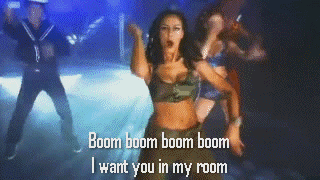
Told you I loved Vengaboys! It’s also on that third cd compilation I ever made!

Fun fact, at the time, for a while I didn’t know what the lyrics were and since I only knew a couple of words of English I was convinced a “broom” was somehow involved in the lyrics instead of a “room”.
6 - Souviens-toi du jour (Mylène Farmer)
US: Not on the list / FR: #73

I’ve said it before and I’ll say it again ; I used to be a huge fan of her as a teenager and my brain somehow links her and her songs in general to some dark times in my life - and so, every single time she appears on one of my lists, I feel like I’m texting an unstable ex and that things will end horribly and I probably shouldn’t do that but, ugh, can’t help it, love her too much.
Ok so the first seconds are actually painful to listen to but holy shit, that’s a beautiful, beautiful song. When the chorus swells near the end, so full of hope and light? Amazing. Chills on my arms every single time. That’s from one of her best albums, too. I have nothing more to say about it.
5 - Better Off Alone (Alice Deejay)
US: Not on the list / FR: #30
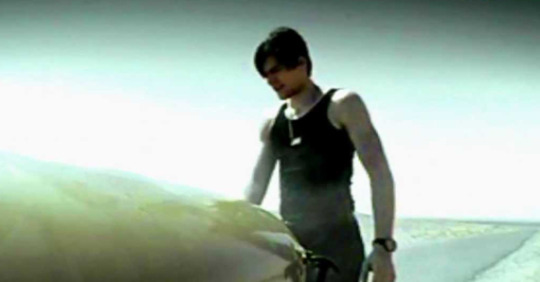
I don’t have anything to say about this one apart from the fact one of my friends around 2005 thought the lyrics were “do you think you’re better? rofl lol” and I think that’s hilarious.
Moving on to- oh shit oh no not that song
4 - Je te rends ton amour (Mylène Farmer)
US: Not on the list / FR: #97
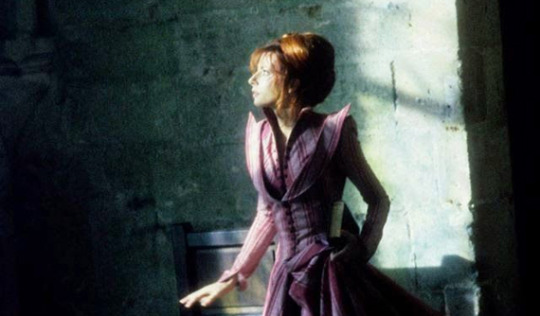
What I said in #6 also applies here and this song is so dark it feels even worse. That song used to be very important in my life. Bad memories, bad times. Really, really bad times.

So. Uh. This is a song about a woman in a painting, who’s despising her creator, and possibly (that’s very, very open to interpretation, here’s a translation) coming out of her frame to kill him. That’s quite possibly the weirdest story I’ve ever heard in a song, and I love it. And it sounds so sinister. God, the first notes. They are so ominous. And that brief moment of silence after the bridge, right before the guitar explodes again? Horrible chills. I’m not sure who killed who or what actually happened in the story but press F to pay respects.
Also the music video has nothing to do with the lyrics and it’s absolutely terrifying and I shouldn’t have watched this at 14 because it’s kinda burned into my mind now and it will never go away and you probably shouldn’t watch it either.
If it wasn’t so inextricably linked to bad memories, this song would be #2. I still love it and listen to it but I kinda jump like a scared rabbit whenever I hear it by surprise and it should come with its own trigger warning as far as I’m concerned.
3 - Narcotic (Liquido)
US: Not on the list / FR: #99
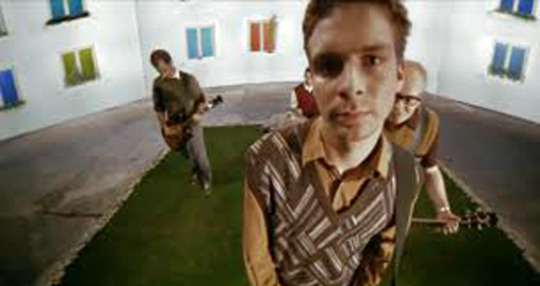
This is barely elligible. But I’m so, so glad it is. These chords right there? Love them. Love. Them.
Also here’s a fun story about this song and me. At first, I was like “oh wow, I can only understand one word out of five, but this sounds badass.” Then a couple of years later I was like “oh. Oh no. It’s about drugs.” And THEN a few years later I was like “oh shit oh no. It’s about sex.” But no, now that I can understand everything, it’s just a breakup song. It’s okay.
2 - Where I’m headed (Lene Marlin)
US: Not on the list / FR: #24
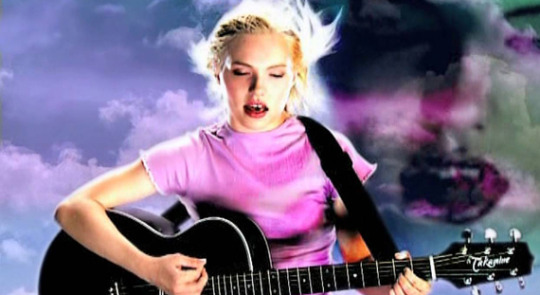
Ok so. Uh. I just realised this song was called Where I’m headed and not, as I believed for literally 18 years, “Pass By”. I had never checked. I have it on several tapes and several cd compilations, always labelled Pass By. It’s also called Pass By on the mp3 I still have in my playlist. I know I’m in the wrong here and probably never checked what the title was but I still feel like there’s been a glitch in the matrix. What happened.
Anyway. Fantastic song. Love it.
Now let’s embarrass myself beyond all hopes of redemption.
1 - Blue (Eiffel 65)
US: Not on the list (...yet. #49 in 2000) / FR: #2
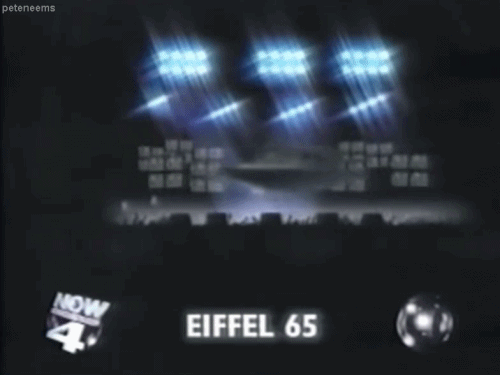
So. Uh. Yeah.
Blue by Eiffel 65 was, for a long, long, LONG time, my favorite song ever.
See? This is one of my oldest lists of favorite songs.

Another one from several months later.

A cd compilation of my favorite songs ever, which I made around 2003 or 2004 as well, with a booklet with lyrics entirely copied by hand and with every page painstakingly illustrated with panels and characters from my favorite comic at the time, Horologiom.
You open the booklet, and look at that, Blue is the second song right after Children.

This silly song which lists blue things and has a nonsensical chorus and one of the dumbest music videos of the entire 90s was, indeed, for years, my favorite song ever. Why. How. Well, first, please remember I am, in fact, a sucker for dance music and electronic music ESPECIALLY when a piano is involved, but this isn’t at all why this song was special to me (and still is, actually).
As I already mentioned, music has colors to me and guess what’s the dominant color of this song? Yepppppp. This is one of the bluest songs ever made even if there’s a little black, yellow and green here and there - the only song I can think about right now which out-blues it is Derezzed by Daft Punk.
And I can’t even begin to explain how SATISFYING a blue song called “Blue” listing blue things and which has an extremely blue music video is.
I know. It’s an embarrassing #1 even for 1999. It took me a long time to post this list partly for this reason. But I wouldn’t be honest if it was placed at any other position. It’s stupid, it’s repetitive, it’s meaningless. I absolutely love it and I’ve loved it for twenty years.
Deal with it.
Next up: the year when I actually started to buy cds with my own money, with debatable results.
10 notes
·
View notes
Text
Harry Potter and the Philosopher's Stone (film)
Harry Potter and the Philosopher's Stone (released in the United States as Harry Potter and the Sorcerer's Stone) is a 2001 fantasy film directed by Chris Columbus and distributed by Warner Bros. Pictures.[5] It is based on J. K. Rowling's 1997 novel of the same name. The film is the first instalment of the Harry Potter film series and was written by Steve Kloves and produced by David Heyman. Its story follows Harry Potter's first year at Hogwarts School of Witchcraft and Wizardry as he discovers that he is a famous wizard and begins his education. The film stars Daniel Radcliffe as Harry Potter, with Rupert Grint as Ron Weasley, and Emma Watson as Hermione Granger.

Warner Bros. bought the film rights to the book in 1999 for a reported £1 million ($1.65 million in 1999). Production began in the United Kingdom in 2000, with Chris Columbus being chosen to create the film from a short list of directors that included Steven Spielberg and Rob Reiner. Rowling insisted that the entire cast be British and Irish, and the film was shot at Leavesden Film Studios and historic buildings around the United Kingdom.
watch harry potter online
The film was released to cinemas in the United Kingdom and United States on 16 November 2001. It became a critical and commercial success, grossing $975.8 million at the box office worldwide. The highest-grossing film of 2001, it is the 47th highest-grossing of all-time (2nd at the time of its release; behind Titanic) and the second most successful instalment of the Harry Potter series behind Deathly Hallows – Part 2. The film was nominated for many awards, including Academy Awards for Best Original Score, Best Art Direction and Best Costume Design. It was followed by seven sequels, beginning with Harry Potter and the Chamber of Secrets in 2002 and ending with Harry Potter and the Deathly Hallows – Part 2 in 2011, nearly ten years after the first film's release.
Contents
1 Plot
2 Cast
3 Production
3.1 Development
3.2 Casting
3.3 Filming
3.4 Design and special effects
3.5 Music
4 Differences from the book
5 Distribution
5.1 Marketing
5.2 Home media
6 Reception
6.1 Box office
6.2 Critical response
6.3 Accolades
7 See also
8 References
9 External links
Plot
One night, Albus Dumbledore and Minerva McGonagall, professors of Hogwarts School of Witchcraft and Wizardry, along with the school's groundskeeper Rubeus Hagrid, deliver a recently orphaned infant named Harry Potter to his only remaining relatives, the Dursleys. Ten years later, Harry has been battling a disjointed life with the Dursleys. After inadvertently causing an accident during a family trip to the zoo, Harry begins receiving unsolicited letters by owls. After the Dursleys escape to an island to avoid more letters, Hagrid re-appears and informs Harry that he is actually a wizard and has been accepted into Hogwarts against the Dursleys' wishes. After taking Harry to Diagon Alley to buy his supplies for Hogwarts and a pet owl named Hedwig as a birthday present, Hagrid informs him of his past: Harry's parents James and Lily Potter met their demise via a Killing Curse at the hands of the malevolent and all-powerful wizard: Lord Voldemort. Harry, the only survivor in the chaos, thus becomes well-known in the wizarding world as "The Boy Who Lived".
Harry is then taken to King's Cross station to board a train to Hogwarts, where he meets three other students: Ron Weasley, whom he quickly befriends; Hermione Granger, an intelligent witch born to Muggle parents; and Draco Malfoy, a boy from a wealthy wizarding family, with whom he immediately clashes. After arriving at school the students assemble in the Great Hall, where all the first-years are sorted by the Sorting Hat among four houses: Gryffindor, Hufflepuff, Ravenclaw, and Slytherin. Although the Sorting Hat considers putting Harry in Slytherin with Draco, he is placed into Gryffindor alongside Ron and Hermione.
At Hogwarts, Harry begins learning magic spells and discovers more about his past and parents. After recovering the Remembrall of Gryffindor student Neville Longbottom, Harry is recruited for Gryffindor's Quidditch team as a Seeker, an extremely rare feat for first-year students. On their way to the dorms one night the stair cases change paths leading Harry, Ron, and Hermione to the forbidden floor of Hogwarts. The three discover a giant three-headed dog named Fluffy in a restricted area of the school. Ron then insults Hermione after being embarrassed by her in a charms lesson, causing Hermione to lock herself in the girls' bathroom. She is attacked by a marauding troll, but Harry and Ron save her, befriending her in the process.
The children later find out Fluffy is guarding the Philosopher's Stone, an object that has the power to turn any metal into gold and produce a potion that grants immortality. Harry suspects that Potions teacher and head of Slytherin House Severus Snape is trying to obtain the stone in order to return Voldemort to physical form. Hagrid accidentally reveals to the trio that Fluffy will fall asleep if played music. Harry, Ron, and Hermione decide that night to try and find the stone before Snape. They discover an already asleep Fluffy and face a series of safeguards including a deadly plant known as Devil's Snare, a room filled with aggressive flying keys that bruise Harry, and a dangerous life-sized game of chess that almost kills Ron.
After getting past the tasks, Harry discovers that it was Defence Against the Dark Arts teacher Quirinus Quirrell who was trying to claim the stone: Snape had actually been protecting Harry all along. Quirrell removes his turban and reveals a weak Voldemort living on the back of his head. Through an enchantment placed by Dumbledore, Harry finds the stone in his possession. Voldemort attempts to bargain the stone from Harry in exchange for reviving his parents, but Harry refuses. Quirrell attempts to kill Harry in response; however, he is instead killed after Harry ends up burning his skin, reducing Quirrell to dust and causing Voldemort's soul to rise from his ashes. Harry is knocked unconscious in the process.
Harry recovers in the school hospital with Dumbledore at his side. Dumbledore explains that the stone has been destroyed and that Ron and Hermione are safe. Dumbledore also reveals how Harry was able to defeat Quirrell: When Harry's mother died to save him, her death gave Harry a love-based protection against Voldemort. Harry, Ron, and Hermione are rewarded with house points for their heroic performances, tying them for first place with Slytherin. Dumbledore then awards ten points to Neville for attempting to stop the trio, granting Gryffindor the House Cup. Harry returns home for the summer, happy to finally have a real home in Hogwarts.
Cast
Further information: List of Harry Potter cast members
Daniel Radcliffe as Harry Potter, an 11-year-old orphan raised by his unwelcoming aunt and uncle, who learns of his own fame as a wizard known to have survived his parents' murder at the hands of the psychopathic dark wizard Lord Voldemort as an infant when he is accepted to Hogwarts School of Witchcraft and Wizardry. Columbus had wanted Radcliffe for the role since he saw him in the BBC's production of David Copperfield, before the open casting sessions had taken place, but had been told by casting director Susan Figgis that Radcliffe's protective parents would not allow their son to take the part.[6] Columbus explained that his persistence in giving Radcliffe the role was responsible for Figgis' resignation.[6] Radcliffe was asked to audition in 2000, when Heyman and Kloves met him and his parents at a production of Stones in His Pockets in London.[7] Heyman and Columbus successfully managed to convince Radcliffe's parents that their son would be protected from media intrusion, and they agreed to let him play Harry.[6] Rowling approved of Radcliffe's casting, stating that "having seen [his] screen test I don't think Chris Columbus could have found a better Harry."[8] Radcliffe was reportedly paid £1 million for the film, although he felt the fee was "not that important".[9] William Moseley, who was later cast as Peter Pevensie in The Chronicles of Narnia series, also auditioned for the role.[10]
Rupert Grint as Ron Weasley, Harry's best friend at Hogwarts. A fan of the series, Grint decided he would be perfect for the part "because [he has] ginger hair".[9] Having seen a Newsround report about the open casting he sent in a video of himself rapping about how he wished to receive the part. His attempt was successful as the casting team asked for a meeting with him.[9]
Emma Watson as Hermione Granger, Harry's other best friend and the trio's brains. Watson's Oxford theatre teacher passed her name on to the casting agents and she had to do over five interviews before she got the part.[11] Watson took her audition seriously, but "never really thought [she] had any chance of getting the role."[9] The producers were impressed by Watson's self-confidence and she outperformed the thousands of other girls who had applied.[12]
John Cleese as Nearly Headless Nick, the ghost of Hogwarts' Gryffindor House.
Robbie Coltrane as Rubeus Hagrid, a half-giant and Hogwarts' Groundskeeper. Coltrane was one of the two actors Rowling wanted most, along with Smith as McGonagall.[13][14] Coltrane, who was already a fan of the books, prepared for the role by discussing Hagrid's past and future with Rowling.[6][15] According to Figgis, Robin Williams was interested in participating in the film, but was turned down for the Hagrid role because of the "strictly British and Irish only" rule which Columbus was determined to maintain.[13][16]
Warwick Davis as Filius Flitwick, the Charms Master and head of Hogwarts' Ravenclaw House. Davis also plays two other roles in the film: the Goblin Head Teller at Gringotts, and dubs the voice of Griphook, who is embodied by Verne Troyer.
Richard Griffiths as Vernon Dursley, Harry's Muggle uncle. Ian McNeice was considered for the role of Vernon.[17]
Richard Harris as Albus Dumbledore, Hogwarts' Headmaster and one of the most famous and powerful wizards of all time. Harris initially rejected the role, only to reverse his decision after his granddaughter stated she would never speak to him again if he did not take it.[18]
Ian Hart as Quirinus Quirrell, the slightly nervous Defence Against the Dark Arts teacher at Hogwarts, and also Lord Voldemort's voice. David Thewlis auditioned for the part; he would later be cast as Remus Lupin in Harry Potter and the Prisoner of Azkaban.[19]
John Hurt as Mr. Ollivander, the owner of Ollivanders, a highly regarded wandmaker.
Alan Rickman as Severus Snape, the Potions Master and head of Hogwarts' Slytherin House. Tim Roth was the original choice for the role, but he turned it down for Planet of the Apes.[20]
Fiona Shaw as Petunia Dursley, Harry's Muggle aunt.
Maggie Smith as Minerva McGonagall, the Deputy Headmistress, head of Gryffindor and transfiguration teacher at Hogwarts. Smith was one of the two actors Rowling wanted most, along with Coltrane as Hagrid.[14]
Julie Walters as Molly Weasley, Ron's caring mother. She shows Harry how to get to Platform 9 3⁄4. Before Walters was cast, American actress Rosie O'Donnell held talks with Columbus about playing Mrs. Weasley.[21]
Production
Development
In 1997, producer David Heyman searched for a children's book that could be adapted into a well-received film.[6] He had planned to produce Diana Wynne Jones' novel The Ogre Downstairs, but his plans fell through. His staff at Heyday Films then suggested Harry Potter and the Philosopher's Stone, which his assistant believed was "a cool idea."[6] Heyman pitched the idea to Warner Bros.[6] and in 1999, Rowling sold the company the rights to the first four Harry Potter books for a reported £1 million (US$1,982,900).[22] A demand Rowling made was for Heyman to keep the cast strictly British, and not to cast foreign actors unless absolutely necessary, nonetheless allowing for the inclusion of Irish actors such as Richard Harris as Dumbledore, and for casting of French and Eastern European actors in Harry Potter and the Goblet of Fire where characters from the book are specified as such.[23] Rowling was hesitant to sell the rights because she "didn't want to give them control over the rest of the story" by selling the rights to the characters, which would have enabled Warner Bros. to make non-author-written sequels.[24]
Although Steven Spielberg initially negotiated to direct the film, he declined the offer.[25] Spielberg reportedly wanted the adaptation to be an animated film, with American actor Haley Joel Osment to provide Harry Potter's voice,[26] or a film that incorporated elements from subsequent books as well.[6] Spielberg contended that, in his opinion, it was like "shooting ducks in a barrel. It's just a slam dunk. It's just like withdrawing a billion dollars and putting it into your personal bank accounts. There's no challenge."[27] Rowling maintains that she had no role in choosing directors for the films and that "[a]nyone who thinks I could (or would) have 'veto-ed' [ sic ] him [Spielberg] needs their Quick-Quotes Quill serviced."[28] Heyman recalled that Spielberg decided to direct A.I. Artificial Intelligence instead.[6]
After Spielberg left, talks began with other directors, including: Chris Columbus, Terry Gilliam, Jonathan Demme, Mike Newell, Alan Parker, Wolfgang Petersen, Rob Reiner, Ivan Reitman, Tim Robbins, Brad Silberling, M. Night Shyamalan and Peter Weir.[6][29][30] Petersen and Reiner both pulled out of the running in March 2000,[31] and the choice was narrowed down to Silberling, Columbus, Parker and Gilliam.[32] Rowling's first choice director was Terry Gilliam,[33] but Warner Bros. chose Columbus, citing his work on other family films such as Home Alone and Mrs. Doubtfire as influences for their decision.[34] Columbus pitched his vision of the film for two hours, stating that he wanted the Muggle scenes "to be bleak and dreary" but those set in the wizarding world "to be steeped in color, mood, and detail." He took inspiration from David Lean's adaptations of Great Expectations (1946) and Oliver Twist (1948), wishing to use "that sort of darkness, that sort of edge, that quality to the cinematography," while being further inspired by the colour designs from Oliver! (1968) and The Godfather (1972).[6]
"Harry Potter is the kind of timeless literary achievement that comes around once in a lifetime. Since the books have generated such a passionate following across the world, it was important to us to find a director that has an affinity for both children and magic. I can't think of anyone more ideally suited for this job than Chris."
— Lorenzo di Bonaventura[34]
Steve Kloves was selected to write the screenplay. He described adapting the book as "tough", as it did not "lend itself to adaptation as well as the next two books."[35] Kloves often received synopses of books proposed as film adaptations from Warner Bros., which he "almost never read",[6] but Harry Potter jumped out at him.[6] He went out and bought the book, and became an instant fan of the series.[35] When speaking to Warner Bros., he stated that the film had to be British, and had to be true to the characters.[35] Kloves was nervous when he first met Rowling as he did not want her to think he was going to "[destroy] her baby."[6] Rowling admitted that she "was really ready to hate this Steve Kloves," but recalled her initial meeting with him: "The first time I met him, he said to me, 'You know who my favourite character is?' And I thought, You're gonna say Ron. I know you're gonna say Ron. But he said 'Hermione.' And I just kind of melted."[6] Rowling received a large amount of creative control, an arrangement that Columbus did not mind.
Warner Bros. had initially planned to release the film over 4 July 2001 weekend, making for such a short production window that several proposed directors pulled themselves out of the running. Due to time constraints, the date was put back to 16 November 2001.[36]
Casting
Rowling insisted that the cast be kept British.[23] Susie Figgis was appointed as casting director, working with both Columbus and Rowling in auditioning the lead roles of Harry, Ron and Hermione.[37] Open casting calls were held for the main three roles,[38] with only British children being considered.[39] The principal auditions took place in three parts, with those auditioning having to read a page from the novel, then to improvise a scene of the students' arrival at Hogwarts, and finally to read several pages from the script in front of Columbus.[39] Scenes from Columbus' script for the 1985 film Young Sherlock Holmes were also used in auditions.[40] On 11 July 2000, Figgis left the production, complaining that Columbus did not consider any of the thousands of children they had auditioned "worthy".[40] On 8 August 2000, the virtually unknown Daniel Radcliffe and newcomers Rupert Grint and Emma Watson were selected to play Harry Potter, Ron Weasley and Hermione Granger, respectively.[41]
Filming
A large castle, with a ditch and trees in front of it.
Alnwick Castle was used as a principal filming location for Hogwarts.
Two British film industry officials requested that the film be shot in the United Kingdom, offering their assistance in securing filming locations, the use of Leavesden Film Studios, as well as changing the UK's child labour laws (adding a small number of working hours per week and making the timing of on-set classes more flexible).[6] Warner Bros. accepted their proposal. Filming began on 29 September 2000 at Leavesden Film Studios and concluded on 23 March 2001,[42] with final work being done in July.[29][43] Principal photography took place on 2 October 2000 at North Yorkshire's Goathland railway station.[44] Canterbury Cathedral and Scotland's Inverailort Castle were both touted as possible locations for Hogwarts; Canterbury rejected Warner Bros. proposal due to concerns about the film's "pagan" theme.[45][46] Alnwick Castle and Gloucester Cathedral were eventually selected as the principal locations for Hogwarts,[6] with some scenes also being filmed at Harrow School.[47] Other Hogwarts scenes were filmed in Durham Cathedral over a two-week period;[48] these included shots of the corridors and some classroom scenes.[49] Oxford University's Divinity School served as the Hogwarts Hospital Wing, and Duke Humfrey's Library, part of the Bodleian, was used as the Hogwarts Library.[50] Filming for Privet Drive took place on Picket Post Close in Bracknell, Berkshire.[48] Filming in the street took two days instead of the planned single day, so payments to the street's residents were correspondingly increased.[48] For all the subsequent film's scenes set in Privet Drive, filming took place on a constructed set in Leavesden Film Studios, which proved to have been cheaper than filming on location.[51] London's Australia House was selected as the location for Gringotts Wizarding Bank,[6] while Christ Church, Oxford was the location for the Hogwarts trophy room.[52] London Zoo was used as the location for the scene in which Harry accidentally sets a snake on Dudley,[52] with King's Cross Station also being used as the book specifies.[53]
A building painted blue, with a sign reading "The Glass House". An advertisement on glasses is affixed on the door.
The store in London used as the exterior of The Leaky Cauldron.
Because the American title was different, all scenes that mention the philosopher's stone by name had to be re-shot, once with the actors saying "philosopher's" and once with "sorcerer's".[29] The children filmed for four hours and then did three hours of schoolwork. They developed a liking for fake facial injuries from the makeup staff. Radcliffe was initially meant to wear green contact lenses as his eyes are blue, and not green like Harry's, but the lenses gave Radcliffe extreme irritation. Upon consultation with Rowling, it was agreed that Harry could have blue eyes.[54]
Design and special effects
Judianna Makovsky designed the costumes. She re-designed the Quidditch robes, having initially planned to use those shown on the cover of the American book, but deemed them "a mess." Instead, she dressed the Quidditch players in "preppie sweaters, 19th century fencing breeches and arm guards."[55] Production designer Stuart Craig built the sets at Leavesden Studios, including Hogwarts Great Hall, basing it on many English cathedrals. Although originally asked to use an existing old street to film the Diagon Alley scenes, Craig decided to build his own set, comprising Tudor, Georgian and Queen Anne architecture.[55]
Columbus originally planned to use both animatronics and CGI animation to create the magical creatures, including Fluffy.[37] Nick Dudman, who worked on Star Wars: Episode I – The Phantom Menace, was given the task of creating the needed prosthetics, with Jim Henson's Creature Shop providing creature effects.[56] John Coppinger stated that the magical creatures that needed to be created had to be designed multiple times.[57] The film features nearly 600 special effects shots, involving numerous companies. Industrial Light & Magic created Lord Voldemort's face on the back of Quirrell, Rhythm & Hues animated Norbert (Hagrid's baby dragon); and Sony Pictures Imageworks produced the Quidditch scenes.[6]
Music
John Williams
Main article: Harry Potter and the Philosopher's Stone (soundtrack)
John Williams was selected to compose the score.[58] Williams composed the score at his homes in Los Angeles and Tanglewood before recording it in London in September 2001. One of the main themes is entitled "Hedwig's Theme"; Williams retained it for his finished score as "everyone seemed to like it" and therefore it was a recurring theme throughout the series.[59]
Differences from the book
Columbus repeatedly checked with Rowling to make sure he was getting minor details correct.[56] Kloves described the film as being "really faithful" to the book. He added dialogue, of which Rowling approved. One of the lines originally included had to be removed after Rowling told him that it would directly contradict an event in the then-unreleased fifth Harry Potter novel Harry Potter and the Order of the Phoenix.[60]
Several minor characters have been removed from the film version, most prominent among them the spectral History of Magic teacher, Professor Binns, and Peeves the poltergeist. The book's first chapter is from the viewpoint of Vernon and Petunia Dursley the day before they are given Harry to look after, highlighting how non-magical people react to magic. The film removes this, beginning with Professor Dumbledore, Professor McGonagall and Hagrid leaving Harry with the Dursleys (although McGonagall tells Dumbledore how she had been watching the Dursleys all day). Harry's less than pleasant times at Mrs. Figg's are cut from the film while the boa constrictor from Brazil in the zoo becomes a Burmese Python in the film. Some conflicts, such as Harry and Draco's encounter with each other in Madam Malkin's robe shop and midnight duel, are not in the film. Some of Nicolas Flamel's role is changed or cut altogether. Norbert is mentioned to have been taken away by Dumbledore in the film; whilst the book sees Harry and Hermione have to take him by hand to Charlie Weasley's friends. Rowling described the scene as "the one part of the book that she felt [could easily] be changed".[55] As a result, the reason for the detention in the Forbidden Forest was changed: In the novel, Harry and Hermione are put in detention for being caught by Filch when leaving the Astronomy Tower after hours, Neville and Malfoy are given detention when caught in the corridor by Professor McGonagall. In the film, Harry, Hermione and Ron receive detention after Malfoy catches them in Hagrid's hut after hours (Malfoy however, is given detention for being out of bed after hours). Firenze the centaur, who is described in the book as being palomino with light blonde hair, is shown to be dark in the film.[61] The Quidditch pitch is altered from a traditional stadium to an open field circled by spectator towers.[55]
The timeline in the book is not enforced in the film e.g. Harry arrived at the Dursleys in 1981 according to the date revealed in Harry Potter and the Deathly Hallows. However, on the film set for 4 Privet Drive, Dudley's certificates from primary school bear the year 2001,[62][63] implying it is set ten years later. Trains bearing the livery of GNER, who operated intercity services on the East Coast Main Line from 1996 to 2007, are seen at Kings Cross station.
Distribution
Marketing
The first teaser poster was released on 1 December 2000.[64] The first teaser trailer was released via satellite on 2 March 2001 and debuted in cinemas with the release of See Spot Run.[65] The soundtrack was released on 30 October 2001 in a CD format. A video game based on the film was released on 15 November 2001 by Electronic Arts for several consoles.[59] A port for the game, for the GameCube, PlayStation 2, and Xbox was released in 2003.[66] Mattel won the rights to produce toys based on the film, to be sold exclusively through Warner Brothers' stores.[67] Hasbro also produced products, including confectionery products based on those from the series.[68] Warner Bros. signed a deal worth US$150 million with Coca-Cola to promote the film,[53] although some pindened the deal at $40 million-$50 million worldwide for the movie.[69] Lego produced a series of sets based on buildings and scenes from the film, as well as a Lego Creator video game.[70]
Home media
Warner Bros. first released the film on VHS and DVD on 11 May 2002 in the UK[71][72] and 28 May 2002 in the US.[73][74][75] The VHS and DVD (The Special Edition) was re-released in 7 May 2004[76] An Ultimate Edition was later released exclusively in the US that included a Blu-ray and DVD. The release contains an extended version of the film, with many of the deleted scenes edited back in; additionally, the set includes the existing special features disc, Radcliffe's, Grint's, and Watson's first screen tests, a feature-length special Creating the World of Harry Potter Part 1: The Magic Begins, and a 48-page hardcover booklet.[77] The extended version has a running time of about 159 minutes, which has previously been shown during certain television airings.[78] Between May and June 2002, the film sold 10 million copies, almost 60% of which were DVD sales.[79]
Reception
Box office
The film had its world premiere at the Odeon Leicester Square in London on 4 November 2001, with the cinema arranged to resemble Hogwarts School.[80] The film was greatly received at the box office. In the United States, it made $32.3 million on its opening day, breaking the single day record previously held by Star Wars: Episode I – The Phantom Menace. On the second day of release, the film's gross increased to $33.5 million, breaking the record for biggest single day again. In total, it made $90.3 million during its first weekend, breaking the record for highest-opening weekend of all time that was previously held by The Lost World: Jurassic Park.[81] It held the record until the following May when Spider-Man made $114.8 million in its opening weekend.[82] The film held onto the No. 1 spot at the box-office for three consecutive weekends.[83][84] The film also had the highest grossing 5-day (Wednesday-Sunday) Thanksgiving weekend record of $82.4 million, holding the title for twelve years until both The Hunger Games: Catching Fire and Frozen surpassed it with $110.1 million and $94 million respectively.[85] Similar results were achieved across the world. In the United Kingdom, Harry Potter and the Philosopher's Stone broke the record for the highest-opening weekend ever, both including and excluding previews, making £16.3 million with and £9.8 million without previews.[86] The film went on to make £66.1 million in the UK alone, making it the country's second highest-grossing film of all-time (after Titanic), until it was surpassed by Mamma Mia!.[87]
In total, the film earned $974.8 million at the worldwide box office, $317.6 million of that in the US and $657.2 million elsewhere,[5] which made it the second highest-grossing film in history at the time,[88] as well as the year's highest-grossing film.[89] As of 2018, it is the unadjusted 47th highest-grossing film of all-time and the second highest-grossing Harry Potter film to date[90] after Deathly Hallows – Part 2, which grossed more than $1 billion worldwide.[91] Box Office Mojo estimates that the film sold over 55.9 million tickets in the US.[92]
Critical response
On Rotten Tomatoes the film has an approval rating of 81% based on 198 reviews, with an average rating of 7.06/10. The site's critical consensus reads, "Harry Potter and the Sorcerer's Stone adapts its source material faithfully while condensing the novel's overstuffed narrative into an involving – and often downright exciting – big-screen magical caper."[93] On Metacritic the film has a score of 64 out of 100, based on 36 critics, indicating "generally favorable reviews".[94] On CinemaScore, audiences gave the film an average grade of "A" on an A+ to F scale.[95]
Roger Ebert called Philosopher's Stone "a classic," giving the film four out of four stars, and particularly praising the Quidditch scenes' visual effects.[96] Praise was echoed by both The Telegraph and Empire reviewers, with Alan Morrison of the latter naming it the film's "stand-out sequence".[97][98] Brian Linder of IGN.com also gave the film a positive review, but concluded that it "isn't perfect, but for me it's a nice supplement to a book series that I love".[99] Although criticising the final half-hour, Jeanne Aufmuth of Palo Alto Online stated that the film would "enchant even the most cynical of moviegoers."[100] USA Today reviewer Claudia Puig gave the film three out of four stars, especially praising the set design and Robbie Coltrane's portrayal of Hagrid, but criticised John Williams' score and concluded "ultimately many of the book's readers may wish for a more magical incarnation."[101] The sets, design, cinematography, effects and principal cast were all given praise from Kirk Honeycutt of The Hollywood Reporter, although he deemed John Williams' score "a great clanging, banging music box that simply will not shut up."[102] Todd McCarthy of Variety compared the film positively with Gone with the Wind and put "The script is faithful, the actors are just right, the sets, costumes, makeup and effects match and sometimes exceed anything one could imagine."[103] Jonathan Foreman of the New York Post recalled that the film was "remarkably faithful," to its literary counterpart as well as a "consistently entertaining if overlong adaptation."[104]
Richard Corliss of Time magazine, considered the film a "by the numbers adaptation," criticising the pace and the "charisma-free" lead actors.[105] CNN's Paul Tatara found that Columbus and Kloves "are so careful to avoid offending anyone by excising a passage from the book, the so-called narrative is more like a jamboree inside Rowling's head."[106] Nathaniel Rogers of The Film Experience gave the film a negative review and wrote: "Harry Potter and the Sorceror's Stone is as bland as movies can get."[107] Ed Gonzalez of Slant Magazine wished that the film had been directed by Tim Burton, finding the cinematography "bland and muggy," and the majority of the film a "solidly dull celebration of dribbling goo."[108] Elvis Mitchell of The New York Times was highly negative about the film, saying "[the film] is like a theme park that's a few years past its prime; the rides clatter and groan with metal fatigue every time they take a curve." He also said it suffered from "a lack of imagination" and wooden characters, adding, "The Sorting Hat has more personality than anything else in the movie."[109]
Accolades
1 note
·
View note
Text
Harry Potter and the Philosopher's Stone (film)
Harry Potter and the Philosopher's Stone (released in the United States as Harry Potter and the Sorcerer's Stone) is a 2001 fantasy film directed by Chris Columbus and distributed by Warner Bros. Pictures.[5] It is based on J. K. Rowling's 1997 novel of the same name. The film is the first instalment of the Harry Potter film series and was written by Steve Kloves and produced by David Heyman. Its story follows Harry Potter's first year at Hogwarts School of Witchcraft and Wizardry as he discovers that he is a famous wizard and begins his education. The film stars Daniel Radcliffe as Harry Potter, with Rupert Grint as Ron Weasley, and Emma Watson as Hermione Granger.
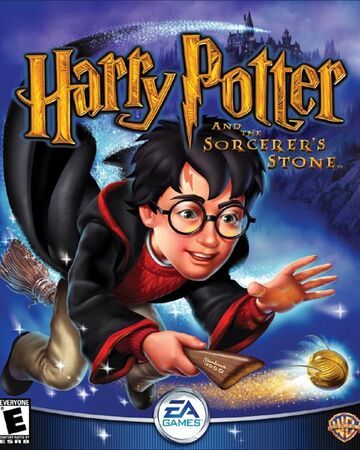
Warner Bros. bought the film rights to the book in 1999 for a reported £1 million ($1.65 million in 1999). Production began in the United Kingdom in 2000, with Chris Columbus being chosen to create the film from a short list of directors that included Steven Spielberg and Rob Reiner. Rowling insisted that the entire cast be British and Irish, and the film was shot at Leavesden Film Studios and historic buildings around the United Kingdom.
watch harry potter online
The film was released to cinemas in the United Kingdom and United States on 16 November 2001. It became a critical and commercial success, grossing $975.8 million at the box office worldwide. The highest-grossing film of 2001, it is the 47th highest-grossing of all-time (2nd at the time of its release; behind Titanic) and the second most successful instalment of the Harry Potter series behind Deathly Hallows – Part 2. The film was nominated for many awards, including Academy Awards for Best Original Score, Best Art Direction and Best Costume Design. It was followed by seven sequels, beginning with Harry Potter and the Chamber of Secrets in 2002 and ending with Harry Potter and the Deathly Hallows – Part 2 in 2011, nearly ten years after the first film's release.
Contents
1 Plot
2 Cast
3 Production
3.1 Development
3.2 Casting
3.3 Filming
3.4 Design and special effects
3.5 Music
4 Differences from the book
5 Distribution
5.1 Marketing
5.2 Home media
6 Reception
6.1 Box office
6.2 Critical response
6.3 Accolades
7 See also
8 References
9 External links
Plot
One night, Albus Dumbledore and Minerva McGonagall, professors of Hogwarts School of Witchcraft and Wizardry, along with the school's groundskeeper Rubeus Hagrid, deliver a recently orphaned infant named Harry Potter to his only remaining relatives, the Dursleys. Ten years later, Harry has been battling a disjointed life with the Dursleys. After inadvertently causing an accident during a family trip to the zoo, Harry begins receiving unsolicited letters by owls. After the Dursleys escape to an island to avoid more letters, Hagrid re-appears and informs Harry that he is actually a wizard and has been accepted into Hogwarts against the Dursleys' wishes. After taking Harry to Diagon Alley to buy his supplies for Hogwarts and a pet owl named Hedwig as a birthday present, Hagrid informs him of his past: Harry's parents James and Lily Potter met their demise via a Killing Curse at the hands of the malevolent and all-powerful wizard: Lord Voldemort. Harry, the only survivor in the chaos, thus becomes well-known in the wizarding world as "The Boy Who Lived".
Harry is then taken to King's Cross station to board a train to Hogwarts, where he meets three other students: Ron Weasley, whom he quickly befriends; Hermione Granger, an intelligent witch born to Muggle parents; and Draco Malfoy, a boy from a wealthy wizarding family, with whom he immediately clashes. After arriving at school the students assemble in the Great Hall, where all the first-years are sorted by the Sorting Hat among four houses: Gryffindor, Hufflepuff, Ravenclaw, and Slytherin. Although the Sorting Hat considers putting Harry in Slytherin with Draco, he is placed into Gryffindor alongside Ron and Hermione.
At Hogwarts, Harry begins learning magic spells and discovers more about his past and parents. After recovering the Remembrall of Gryffindor student Neville Longbottom, Harry is recruited for Gryffindor's Quidditch team as a Seeker, an extremely rare feat for first-year students. On their way to the dorms one night the stair cases change paths leading Harry, Ron, and Hermione to the forbidden floor of Hogwarts. The three discover a giant three-headed dog named Fluffy in a restricted area of the school. Ron then insults Hermione after being embarrassed by her in a charms lesson, causing Hermione to lock herself in the girls' bathroom. She is attacked by a marauding troll, but Harry and Ron save her, befriending her in the process.
The children later find out Fluffy is guarding the Philosopher's Stone, an object that has the power to turn any metal into gold and produce a potion that grants immortality. Harry suspects that Potions teacher and head of Slytherin House Severus Snape is trying to obtain the stone in order to return Voldemort to physical form. Hagrid accidentally reveals to the trio that Fluffy will fall asleep if played music. Harry, Ron, and Hermione decide that night to try and find the stone before Snape. They discover an already asleep Fluffy and face a series of safeguards including a deadly plant known as Devil's Snare, a room filled with aggressive flying keys that bruise Harry, and a dangerous life-sized game of chess that almost kills Ron.
After getting past the tasks, Harry discovers that it was Defence Against the Dark Arts teacher Quirinus Quirrell who was trying to claim the stone: Snape had actually been protecting Harry all along. Quirrell removes his turban and reveals a weak Voldemort living on the back of his head. Through an enchantment placed by Dumbledore, Harry finds the stone in his possession. Voldemort attempts to bargain the stone from Harry in exchange for reviving his parents, but Harry refuses. Quirrell attempts to kill Harry in response; however, he is instead killed after Harry ends up burning his skin, reducing Quirrell to dust and causing Voldemort's soul to rise from his ashes. Harry is knocked unconscious in the process.
Harry recovers in the school hospital with Dumbledore at his side. Dumbledore explains that the stone has been destroyed and that Ron and Hermione are safe. Dumbledore also reveals how Harry was able to defeat Quirrell: When Harry's mother died to save him, her death gave Harry a love-based protection against Voldemort. Harry, Ron, and Hermione are rewarded with house points for their heroic performances, tying them for first place with Slytherin. Dumbledore then awards ten points to Neville for attempting to stop the trio, granting Gryffindor the House Cup. Harry returns home for the summer, happy to finally have a real home in Hogwarts.
Cast
Further information: List of Harry Potter cast members
Daniel Radcliffe as Harry Potter, an 11-year-old orphan raised by his unwelcoming aunt and uncle, who learns of his own fame as a wizard known to have survived his parents' murder at the hands of the psychopathic dark wizard Lord Voldemort as an infant when he is accepted to Hogwarts School of Witchcraft and Wizardry. Columbus had wanted Radcliffe for the role since he saw him in the BBC's production of David Copperfield, before the open casting sessions had taken place, but had been told by casting director Susan Figgis that Radcliffe's protective parents would not allow their son to take the part.[6] Columbus explained that his persistence in giving Radcliffe the role was responsible for Figgis' resignation.[6] Radcliffe was asked to audition in 2000, when Heyman and Kloves met him and his parents at a production of Stones in His Pockets in London.[7] Heyman and Columbus successfully managed to convince Radcliffe's parents that their son would be protected from media intrusion, and they agreed to let him play Harry.[6] Rowling approved of Radcliffe's casting, stating that "having seen [his] screen test I don't think Chris Columbus could have found a better Harry."[8] Radcliffe was reportedly paid £1 million for the film, although he felt the fee was "not that important".[9] William Moseley, who was later cast as Peter Pevensie in The Chronicles of Narnia series, also auditioned for the role.[10]
Rupert Grint as Ron Weasley, Harry's best friend at Hogwarts. A fan of the series, Grint decided he would be perfect for the part "because [he has] ginger hair".[9] Having seen a Newsround report about the open casting he sent in a video of himself rapping about how he wished to receive the part. His attempt was successful as the casting team asked for a meeting with him.[9]
Emma Watson as Hermione Granger, Harry's other best friend and the trio's brains. Watson's Oxford theatre teacher passed her name on to the casting agents and she had to do over five interviews before she got the part.[11] Watson took her audition seriously, but "never really thought [she] had any chance of getting the role."[9] The producers were impressed by Watson's self-confidence and she outperformed the thousands of other girls who had applied.[12]
John Cleese as Nearly Headless Nick, the ghost of Hogwarts' Gryffindor House.
Robbie Coltrane as Rubeus Hagrid, a half-giant and Hogwarts' Groundskeeper. Coltrane was one of the two actors Rowling wanted most, along with Smith as McGonagall.[13][14] Coltrane, who was already a fan of the books, prepared for the role by discussing Hagrid's past and future with Rowling.[6][15] According to Figgis, Robin Williams was interested in participating in the film, but was turned down for the Hagrid role because of the "strictly British and Irish only" rule which Columbus was determined to maintain.[13][16]
Warwick Davis as Filius Flitwick, the Charms Master and head of Hogwarts' Ravenclaw House. Davis also plays two other roles in the film: the Goblin Head Teller at Gringotts, and dubs the voice of Griphook, who is embodied by Verne Troyer.
Richard Griffiths as Vernon Dursley, Harry's Muggle uncle. Ian McNeice was considered for the role of Vernon.[17]
Richard Harris as Albus Dumbledore, Hogwarts' Headmaster and one of the most famous and powerful wizards of all time. Harris initially rejected the role, only to reverse his decision after his granddaughter stated she would never speak to him again if he did not take it.[18]
Ian Hart as Quirinus Quirrell, the slightly nervous Defence Against the Dark Arts teacher at Hogwarts, and also Lord Voldemort's voice. David Thewlis auditioned for the part; he would later be cast as Remus Lupin in Harry Potter and the Prisoner of Azkaban.[19]
John Hurt as Mr. Ollivander, the owner of Ollivanders, a highly regarded wandmaker.
Alan Rickman as Severus Snape, the Potions Master and head of Hogwarts' Slytherin House. Tim Roth was the original choice for the role, but he turned it down for Planet of the Apes.[20]
Fiona Shaw as Petunia Dursley, Harry's Muggle aunt.
Maggie Smith as Minerva McGonagall, the Deputy Headmistress, head of Gryffindor and transfiguration teacher at Hogwarts. Smith was one of the two actors Rowling wanted most, along with Coltrane as Hagrid.[14]
Julie Walters as Molly Weasley, Ron's caring mother. She shows Harry how to get to Platform 9 3⁄4. Before Walters was cast, American actress Rosie O'Donnell held talks with Columbus about playing Mrs. Weasley.
1 note
·
View note
Text
Top 7 Performances of Laneway 2020!

Written by Ryley Clarke
Marking its 14th return to its hometown of Melbourne, Laneway Festival 2020 presented its most versatile line up yet, composed of Australia’s most loved bands and some of the world’s most renown international artists; not to mention the many unique and niche acts which Laneway festival has had a rep for showcasing since day 1. The day was full of so many amazing moments and sound-satisfying performances from every artist, but there were some performances which truly stood out. So, let’s recap some of the best performances of Laneway’s biggest and boldest year yet.
1. The 1975
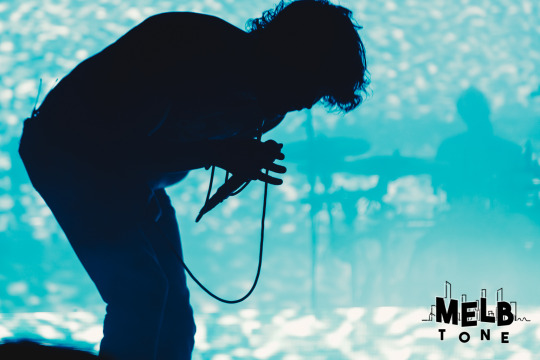
After a somewhat frightening situation for frontman Matt Healy of The 1975, who was not able to perform at Brisbane’s Laneway Festival (due to last minute illness), many wondered if The 1975 would be able to perform the rest of their Laneways shows. Somehow, Healy somehow managed to super-humanly heal himself, and return to the lineup in no time.
Barely wasting a second, The 1975 jumped on stage, bringing with them a deafening sound of anticipation. I turned around and saw a whole new level of enthusiasm from the crowd, their cries of excitement surrounding the festival. Launching a brand-new set (full of their trademark energetic and captivating pop hits), they started the with a bang, Healy screaming their loud punk-pop rocking melodies into microphone.
Having never properly listened to The 1975 before, I was amazed by how much more louder, punchier, and vibrant their live-shows are compared to their recordings (which feel slightly quiet, but still full of passion). The charismatic energy from the crowd continued to fuel The 1975, as they played the hits that defined their name, ‘Love It If We Made It’, ‘It’s Not Living (If It’s Not With You)’ and ‘Chocolate’.
My favourite part of their show was when Matt calmed things down and played a pre-recorded piece from their upcoming album, a sample starring Greta Thunberg, talking about the earth’s current state and what the future may hold for us. The 1975 proved that political bands and moments like this still hold a big part in what makes Laneway’s Festival. What matters most is holding attention to the worlds current problems, we can sing and dance and party all we like, but at the end of the day climate change is a reality Australia has faced this summer, and this moment was a perfect reminder of why we have to continue to fight climate change.
2. Charli XCX

Returning to Australia for her very first festival headlining slot, Charli didn’t stop for one moment, keeping the energy and the enthusiasm going throughout the entirety of her set.
Charli was nothing but fun and confident, performing her heart out to one of the biggest crowds of the day. I never knew that Charli XCX co-wrote ‘I Love It’ in collaboration with Icona Pop and was definitely the surprise of the day for me. Hands went flying in the air with screams of joy, for all of her hit songs, including ‘I Got It’, ‘Boys’, and ‘1999’.
Her heart-warming performance ended what felt too soon, with Charli XCX performing her final song and exiting the stage, leaving the crowd in the midst of the final hours of the evening, and in eager anticipation for The 1975…
3. Hockey Dad

Kicking off with a new track (’In This State’), Hockey Dad showed off their catchy pop lyrics, while still staying true to the pulsing and spirit driven surf sound the rock legends are known for. Hockey Dad smashed out a brilliant hard-rocking set, comprised of all of their greatest achievements from Boronia, Dreamin’, and their latest album, Blend Inn.
Seeing Hockey Dad shred their newest hit ‘I Missed Out’, which took out the 60th spot in the Hottest 100 (should’ve been higher, like seriously Triple J, what the hell), was bloody awesome, absolutely nailing the epic, surfy solo.
Joining their new live roster was bassist Steven from Step Panther, who was asked to fill in the backline so Zac could shred a few more solo’s here and there. I have to say, this was a bloody good choice, it worked really well. Adding a bassist to their lineup further improved their sound, not to say that their live setup hasn’t always interested fans (including myself), but it provided a much needed punchier and harder sound.
Finishing their set with ‘Seaweed’, Hockey Dad have seriously began to make an impression, I’ve always thought they were headliner worthy, and I think if they are given the chance I think they will absolutely own it.
4. Ocean Alley

I don’t think I’ve ever seen Sydney legends Ocean Alley perform a bad set. They kicked off the evening with a surf psychedelic rhythm that was contagious, perfect, and nicely placed to chill out and enjoy the evening breeze that began to cool down the festival punters.
The rhythmic six-piece band captured the attention of every punter, snagging one of the biggest audiences of the day, with everyone wanting to get a piece of Ocean Alley. Punters were on each other’s shoulders, as the band grooved through a perfectly flowing set. Kicking off with ‘Knees’, ‘The Comedown’, and ‘Yellow Mellow’, Ocean Alley also played some newly released tracks, marking their live debut. ‘Stained Glass’ and ‘Tombstone’ had the crowd freshly tuned and focused in anticipation for their new album, which will hopefully be released sometime this year.
Ocean Alley’s transitions between songs are always exceptional, so much so that it’s always my favourite component of their set. The build up between Lemonworld and into Confidence had people crowdsurfing in absolute excitement, they knew exactly what was coming, singing and dancing, it’s always a special moment to see in person.
5. King Gizzard and the Lizard Wizard

Known to be Australia’s favourite multi-faceted musicians, King Gizzard and the Lizard Wizard comfortably rocked their way through a bloody awesome and diverse set. The shred-lords went through some of their most hard hitting and thrashing songs to their most versatile, soft, indie rocking sounds. You would think these dynamics wouldn’t fit within their setlist, but being the magician wizards they are, King Gizzard somehow pulled it off with ease.
The moshpit kicked dust into the sky as some of the band’s punchier rock songs got the crowd going. As their set progressed and changed altitudes, the crowds vibe changed with them, nonetheless, the crowd enjoyed every song they performed.
6. BENEE

New Zealand’s brightest star, BENEE, truly shined like glitter, charming the crowds hearts and minds, and without a doubt winning the future of contemporary pop music.
She kicked off her performance with ‘Tough Guy’, setting the pace and mood for her set, picking things up with ‘Supalonely’ and ‘Find an Island’. Continuing to humorously charm the crowd as she pulled faces and laughed along to her melodic pop, getting everyone dancing and singing no matter how popular the song.
7. Spacey Jane

I was super excited to see Spacey Jane live for the first time, and they didn’t disappoint one bit. Fast paced, hair flying everywhere, nothing better than a crowd jumping up and down, in-awe is the best way to describe their set. Spacey Jane have played numerous gigs in the past couple of years, and their hard work and determination is finally paying off.
Gaining popularity by the minute, the garage-indie rockers had an electrifying sound to their set, their spirited fuzzy guitar and their strong, bold bass and drum-beat characteristically brought the best out of their uncommon but deeply loved songs. They shredded their way through some of my favourites, ‘Feeding the Family’, ‘Neoprene’, ‘HeadCold’, ‘Thrills’, as well as their #triplejhottest100 hit ‘Good for You’ marking its place, as fans patiently await their debut album coming out sometime towards the end of the year.
1 note
·
View note
Text
Washington Wizards Acquire Rookie Laron Profit from Orlando

On September 22nd, 1999, the Orlando Magic traded guard-forward Laron Profit to the Washington Wizards for a conditional 2001 second round draft pick (Omar Cook).
In the 1999 NBA Draft, the Orlando Magic made three selections. They acquired a first round pick in Corey Maggette and also made two selections in the second round in Louis Bullock and Laron Profit. After the Magic drafted Profit 38th overall, they reportedly were set to offer him a one-year, $300,000 deal.
After wheeling and dealing throughout the 1999 offseason, the Magic saw a limited opportunity for Profit to make the roster. Orlando decided to deal the wing to the Washington Wizards for a conditional second round pick that would only be conveyed if Profit made the Wizards roster out of training camp.
The move to Washington was a homecoming of sorts for Profit. He had played four years at the University of Maryland. A three-time third team All-ACC member, Profit averaged 12.5 PPG in four seasons and established himself as a quality perimeter defender.
After a strong showing in 1999 training camp, the rookie Profit made the Wizards roster for the 1999-00 season. Washington won their season opener, but followed that up with seven consecutive losses.
The early losing streak set the tone for the season, as the Wizards had one of the worst records in the NBA for much of the season. At one point the team was 14-30 when head coach Gar Heard was fired. New president of basketball operations Michael Jordan made the decision and hired Darrell Walker to replace him. The Wizards went 15-23 under Walker the rest of the way to finish 29-53. In his rookie campaign, Profit only saw action in 33 games. In 6.8 MPG, he amassed 1.5 PPG, 0.8 RPG and 0.8 APG.
After the season, the Wizards moved Walker to the front office and hired University of Miami coach Leonard Hamilton to take over. In the summer of 2000, Profit became a free agent. Late in free agency, Profit and the Wizards agreed on a two-year deal worth around $1.1 million.
The Wizards were limited to small transactional moves since they didn’t have their first round pick in the 2000 NBA Draft, and were over the salary cap. Going into the 2000-01 season, the Wizards kept much of the roster intact. Profit was nearly waived in training camp, but he managed to survive after veteran Lorenzo Williams was released.
Washington got off to a decent 2-3 start, but the season went south quick. The Wizards dropped 22 of their next 25 games and fell to 5-25. The team would never recover with an aging and unhappy core of Rod Strickland, Mitch Richmond and Juwan Howard. Strickland was waived, Howard was traded around the trade deadline and Richmond dealt with injuries throughout the year. The Wizards experienced the second-worst season in franchise history, winning just 19 games.
With the Wizards dealing with injuries to several veterans, Profit was given a chance to start in the final 12 games of the season. In that stretch, he averaged 9.7 PPG on 41.6% from the field, 3.9 RPG, 5.8 APG, 2.0 SPG and 0.5 BPG in 36.4 MPG. Overall, he finished the year with 4.3 PPG, 1.8 RPG, 2.5 APG and 1.0 SPG in 35 contests and 17.3 MPG.
In the 2001 offseason, the Wizards dealt Profit and a 2005 first round draft pick to the Magic for the rights to the 20th pick in the 2001 draft, Brendan Haywood. Profit ended his time in Washington with a stat line of 3.0 PPG, 1.3 RPG, 1.7 APG and 0.6 SPG in 68 career games. The 6′4″ guard shot 38% from the field and 67% from the free-throw line in that two-year span.
Since Profit had made the Wizards roster, the 2001 second rounder was conveyed to Orlando. With the Wizards having the second worst record in the NBA during the 2000-01 season, the Magic ended up with the 32nd pick in the 2001 NBA Draft. Orlando selected St. John’s point guard Omar Cook with the selection. On the same night, the Magic dealt Cook to the Denver Nuggets in a deal that saw the Magic recoup a first rounder that they had originally dealt to Denver in 2000.
Laron Profit on how going to Washington would help his chances of landing on an NBA roster at season’s start (via the Baltimore Sun):
“When I got drafted by Orlando, they had about six guards. Then they traded Penny [Hardaway] and Nick [Anderson], and they seemed to have about 10 to 12 guards. I thought my chances were a lot better here.”
Washington Wizards general manager Wes Unseld on adding Profit (via the Baltimore Sun):
“He has the skills to play both the shooting guard and small forward positions. He has proven in his four years at Maryland to be a solid defensive player.”
Image via The Baltimore Sun/Gene Sweeney Jr.
0 notes
Text
How Harry Potter Shaped Modern Internet Fandom
https://ift.tt/2NVQZFE
For many, the true magic of the Potterverse lies not in its prose, but in the model of internet fandom it helped nurture.
facebook
twitter
google+
tumblr
Feature Kayti Burt
Harry Potter
Jul 31, 2018
Fandom
In this second era of Harry Potter content, it can be hard to forget a time before the boy wizard and his magical world ruled the internet.
Harry Potter and the internet are so inextricably intertwined. Star Trek fandom may have written many of the rules of modern slash fanfiction. The X-Files fandom gave us the term "shipping." But it was the Harry Potter fandom that defined much of the community-based internet fandom culture we know and (mostly) love today.
As Harry Potter fandom continues to struggle, shape, and define how we engage with the most popular stories in the world, and with the other people who love them, let's take a look back at th fandom that helped shaped how we use the internet today...
(Image above via Dorkly.)
Harry Potter and The Birth of the Internet
The first Harry Potter book, Harry Potter and the Sorcerer's Stone, was published in 1998 in the U.S., somewhere in the middle of the process that saw the internet graduating from a resource used mostly at universities and by privileged uber-nerds to mainstream use. By mid-1999, the internet was in a third of U.S. households. By 2001, it had reached the 50 percent mark.
Where was Harry Potter fandom in 2001? It was the year the first Harry Potter film was released. It was also one year into the so-called "Three-Year Summer," the longest stretch between the publishing of any two Harry Potter books (after The Goblet of Fire and before The Order of the Phoenix.)
The Three-Year Summer is known within Harry Potter fandom as a period of intense creation, discussion, and collaboration. It was when the Potterverse really came into its own, and it was perfectly aligned with the spread of internet technology across the U.S.
So was Harry Potter just in the right place at the right time? Definitely, but that doesn't negate the strength of J.K. Rowling's characters, plot structure, and world-building. It also doesn't negate the serialized nature of the Harry Potter story, a feature that Francesca Coppa argues made Harry Potter perfect fodder for fandom. In The Fanfiction Studies Reader, Coppa writes:
Harry Potter comes to us as the embodied protagonist of a series of stories that retell Harry's adventures during a series of school years ... The ongoing series of novels was then made into an ongoing series of films. In all these ways, the Harry Potter books resist the status of 'finished literary text' made up of particular words in a particular order, and instead construct themselves as the open-ended inspiration for future performative supplements that will allow its audience to reconstitute itself on a regular basis.
The stage was set.
Harry Potter and The Fanfiction
Fanfiction has always been a thing. From The Great Game to Wide Sargasso Sea to Spockanalia, fans have long been inspired to become creators in the fictional worlds they love. Fandom as we now know it today, however, is a more modern development. It has become much easier to create a community around fannish excitements since the development of mass media and, even more recently, the internet.
As we've already established, Harry Potter came around at a time when modern fandom was given its first chance to be. A huge part of this fannish revolution was in the writing, reading, and sharing of fanfiction. Websites like Fanfiction.net, FictionAlley, and LiveJournal gave Harry Potter fanfiction writers and readers a place to gather with like-minded fans, to find other people who enjoyed nerding out about and becoming creators within the world of their favorite story in a way that, previously, might have made you an outsider. The internet created accessible community in a way like never before. This was the first step toward mainstreaming fannish activities and behavior.
On September 4th, 1999, the first Harry Potter fanfiction story was uploaded onto Fanfiction.net. That same month, the Harry Potter for GrownUps mailing list is started. The following month, in October 1999, MuggleNet launches. Both were sites where fanfiction was shared and welcomed, though that was far from their only purpose. August 2000 saw Cassandra Clare (who would go on to write the wildly popular YA series The Mortal Instruments, source material for current Freeform TV series Shadowhunters) publish the first chapter of "The Draco Trilogy." The series would continue to be updated over the next six years and included almost one million words spanning three, novel-length stories.
For many young fans, fanfiction was (and is) more than a way of engaging in their favorite story; it is a way of better understanding the world and their own identities. It is a way of breaking outside the narrow boundaries of most canon culture and normalizing something other than the straight, white, male, financially-secure experience that dominates stories with corporate backing. Fanfiction is a way of saying: whoever you are, that's OK.
It's not a secret that much of the fanfiction (though definitely not all) involves queer pairings. Slash fanfiction is the name for fanfiction written about two same-sex characters in a romantic and/or sexual pairing. The term "slash" refers to the "/" between the two characters in question and comes out of Star Trek fandom, specifically the Kirk/Spock relationship.
Jameson writes about the influence of megafandoms like Harry Potter and Twilight on the sexual education of younger generations in her book Fic: Why Fanfiction is Taking Over the World, saying:
Harry Potter slash helped shape and challenge attitudes toward sexual diversity among the generation that grew up reading it and arguing about it (a lot) online ... Where previous generations may have looked to parental porn stashes and the pages of Cosmopolitan, today's teens increasingly find such information in fanfiction.
They write it in fanfiction — and in some version or another, they always have. They used to write it in notebooks, and now they write it and share it online. Like it or not, this has become normal and public, a part of growing up for millions. If Twilight and Harry Potter have taught us anything, it's that authorial intent has nothing to do with the afterlives of characters.
The representation of queer characters has come a long way in the last 15 years, and I think it's fair to credit some of that progression to the mainstreaming of a fandom culture that has long been more comfortable with focusing on queer relationships.
Intellectual property attorney, FictionAlley co-founder, and fanfiction writer Heidi Tandy writes about the early days of Harry Potter fandom in Fic, saying:
A decade ago, I was slammed as immoral for letting teenagers discuss whether gay wizards even existed; in 2007, J.K. Rowling told us they did. Kids who were thirteen in 1999 and 2002 and 2004 are in their twenties now, and those who were college students then have kids of their own. If you told them that it was immoral to let thirteen-year-olds read YA stories about gay teenage wizards, they would probably laugh and tell you it'd be immoral to ban them from reading those stories. Or anything else.
Today, readers don't only have fanfiction for gay teen wizard stories. In 2015, Rainbow Rowell published Fangirl, a young adult novel about a college-aged girl and fanfiction writer. Her follow-up novel, Carry On, focuses on the Harry Potter-like characters first introduced as fanfiction characters in Fangirl. (Yes, Simon and Baz are teen wizards. And, yes, they fall in love.)
Carry On might not actually be fanfiction, but it does use many of fanfiction's most beloved tropes and serves similar functions, challenging, expanding, and dismantling many of the narrative constructs utilized in Harry Potter canon, most especially the "Chosen One" trope.
The story prioritizes interiority and emotionality, in a way that is much more common in fanfiction than it is in canon fiction, as Elizabeth Minkel explains in her Medium article "Harry Potter and the Sanctioned Follow-Up Work (or, Fanfiction vs. the Patriarchy)."
The privileging of character, of emotionality, of interiority, is par for the course in female-dominated transformative fandom, and pretty rare in the largely male-authored source works that rule the fan world, especially big-budget blockbuster franchises. It's at the heart of the shipping clashes between creators and fans, when creators throw up their hands and say "stop making this about romance and/or sex!!" Creators are making plot-oriented worlds first, then thinking about what the characters will do; female-dominated fandom is thinking about who the characters are, and in a given situation, what they feel.
Notably, an interest in interiority and emotionality are common traits in contemporary young adult fiction. One could make the argument that YA fiction partially gets this trait from the fanfiction tradition that many of its writers (and many of its readers) hail from.
Harry Potter and The Powers That Be
We've written a bit on Den of Geek about the ongoing tensions between sanctioned creaters and fandom. With the rise of social media, conversations between The Powers That Be and fandom are easier than ever. This means that it's easier than ever to give creators praise for and ask questions about the stories they've created, but it's also easier than ever to critique content directly to its creators, corporate backers, and rights-holders. Though this might seem like a more modern phenomenon, it has its foundations in the earliest years of internet fandom.
When Harry Potter fandom first began, the legal definitions of "fair use" and "transformative works" had not been tested in this new pioneer of internet fandom. They would be. In 2000, Warner Bros. bought the merchandising rights to all things Harry Potter, aside from the books themselves. They began sending out cease-and-desist letters that were, in the words of Tandy, "Umbridge-esque threatening letters to teens around the world, insisting they hand over domain names that included terms from the Harry Potter series."
Tandy elaborates:
What I, as a newcomer to online fandom, didn't know at the time was that a few fans who'd come to HP from other fandoms thought that the only proper response, if The Powers That Be asked you anything, was to shut down your site, pull down your fics and your discussions, and go away— maybe even change your online name, which definitely had no link to your real-world self. But how could you be a fan of a book that was premised on standing up to evil and saying no to overreaching by The Authorities, and just do that?
Henry Jenkins writes about this period of fandom history, known as The Potter War, in Convergence Culture: Where Old and New Media Collide. Jenkins tells the story of how Heather Lawver, the then-teenage fan who ran the website The Daily Prophet, launched the Defense Against the Dark Arts campaign, coordinating media outreach and activism against the studio with other Harry Potter fans and site-runners across the world. Lawver told Jenkins:
Warner was very clever about who they attacked ... They attacked a whole bunch of kids in Poland. How much of a risk is that? They went after the 12 and 15 year olds with the rinky-dink sites. They underestimated how interconnected our fandom was. They underestimated the fact that we knew those kids in Poland and we knew the rinky dink sites and we cared about them.
Warner Bros. wasn't prepared for the Harry Potter fandom to be so well-organized, or perhaps to be a community at all. Unlike fandom before the rise of the internet, these groups of fans could communicate and coordinate like never before.
Fandom crossed boundaries of age, nation, language, and culture to push back against Warner Bros.'s campaign to keep this fictional universe firmly in the hands of The Powers That Be. And it worked. Diane Nelson, Warner Bros. Family Entertainment's senior vice president at the time, told Jenkins:
We didn't know what we had on our hands early on in dealing with Harry Potter. We did what we would normally do in the protection of our intellectual property. as soon as we realized we were causing consternation to children or their parents, we stopped it ... [Now,] we are trying to balance the needs of other creative stakeholders, as well as the fans, as well as our own legal obligations, all within an arena which is new and changing and there are not clear precedents about how things should be interpreted or how they would be acted upon if they ever reached the courts.
The reaction from internet fandoms of the time, including the ever-growing Harry Potter online fandom, shaped the rules for the current relationship between The Powers That Be and The Fans. If those Harry Potter fans had been less organized, who knows what the internet would look like today?
Harry Potter and The Conclusion
Books could be (and have been) written about the expansive Harry Potter fandom. From wizard rock to the Harry Potter Alliance to LeakyCon, the Harry Potter fandom is no one thing. It is massive and diverse. Fans participate for different reasons and in different ways and that makes it hard to come to any sweeping conclusions about its nature, purpose, or growth. However, it does seem safe to note its vital importance as one of the first major internet fandoms. A fandom that developed along with the internet and, in some small part, helped shape what it would become.
For many, Harry Potter fandom is just as if not more powerful than Harry Potter canon itself. Any why wouldn't it be? Fandom involves millions of creators rather than just one. Of course it is richer than the book, stage play, and prequel movies that, by the broadest definition, include thousands of creators.
Fandom is a conversation. Canon is a lecture — often times, an articulate one, but one-sided nonetheless. Or, if you'd prefer, the statement that starts the larger cultural discussion that, through fandom, more people than ever before are able to participate in.
As Alanna Bennett touches on in her recent Buzzfeed piece "The Harry Potter Fandom Is At A Crossroads," the current angst in the Harry Potter community is as much about seeing canon fall short of the infinity of fandom as it is about the lackluster quality of Fantastic Beasts and Where to Find Them.
"The Potter fandom has crafted a legacy of engagement and creativity that the series’ modern canonical efforts are struggling to live up to. For so many fans ... it can be hard to get hype about Cursed Child when they recognize in it so many of the tropes they explored themselves a decade ago — in content they created and championed."
An entire generation of fans is being asked to reevaluate the presumed value of canon vs. fandom and coming up with an answer The Powers That Be might not like. The Harry Potter book series is often credited with getting an entire generation of kids to read, but, perhaps even more importantly, it gave an entire generation of nerds community-based fandom.
In turn, Harry Potter fandom gave us (with the rise of the internet) the mainstreaming of nerd culture. It taught an entire generation of nerds that they are not alone and that they don't have to wait for The Powers That Be to write people who look, act, and feel like them into the stories they love. They can do it themselves.
There is a nostalgia for these early days of Harry Potter fandom as much as there is a nostalgia for the Harry Potter books themselves, but I'm not sure how many people would want to go back to a time when fans' rights to act as creators in the stories that act as our modern myths were so uncertain. Not when, now, this community-based form of loving, challenging, and expanding the stories that make up our popular culture has become so normal.
Harry Potter canon might be aging into something less relevant and more problematic than its earlier incarnations, but the modern fandom it helped create is more important than ever.
from Books https://ift.tt/2v3Oxpl
0 notes